|
There are so many different types of fabrics available: velvet, polyester, tweed and silk, chiffon just to name a few. These range from light weight to medium weight and heavy weight woven fabrics. Some of these are sheer like chiffon, net or georgette. Others are very thick like velour or denim. With so many different choices, are all fabrics suitable for rhinestone embellishment? The short answer is yes. Certainly, there are some fabrics that you cannot embellish with hot fix rhinestones. Chiefly, these are fabrics that have low absorbency or have been chemically treated with water repellent treatments, easy to care treatments or softening agents and sheer fabrics. Glues for Attaching Rhinestones to Fabric However, providing you use the correct glue and technique, non-hot fix rhinestones can be used to embellish many more types of fabric. Glues such as super glues, hot glue and those containing acetone are NOT recommended. Two of the most popular glue for attaching rhinestones are E6000 and Gem-Tac. Gem-Tac is my favorite glue for using on fabrics for ease of use. You can squeeze it directly out of the bottle and easily control how much glue you apply. E6000 is gloppy and harder to control the flow. Technique for Gluing Rhinestones to Fabric Notably, most important aspect of gluing rhinestones is the amount of glue. Ultimately, the glue needs to seep out from the edges when the rhinestone is pressed into the glue drop. This provides a seal to protect the rhinestone and keep it from falling off. Adhesives tend to shrink when curing. If too little glue is used, there may be too much space between the rhinestone and the glue. As a result, this can cause the rhinestone to peel off. All suitable rhinestone fabric glue dries clear, so it will not be seen if you accidentally use too much. And it is preferable to use too much rather than too little and have your rhinestone peel off. Sheer fabrics can be embellished with rhinestones too. Place a piece of wax paper underneath when gluing. Then, glue as described above. When the glue is done curing, simply peel the was paper off from the underside of the fabric. Applying rhinestones to fabric seems daunting but is actually very easy. If you have any questions, feel free to contact Rhinestone Etc. We will be happy to answer your questions. Rhinestones Etc Storesells quality rhinestones while providing excellent customer service.
0 Comments
Have you checked the price of figure skating dresses which are embellished with rhinestones? Bargain prices can range up in the $300 range. If you shop around, you can find a plain skating dress for about $75. That is a big difference when you are paying for skates, lessons, testing and competitions. Do you want your skater to dazzle on the ice? Buy the cheaper figure skating dress, glue on rhinestone yourself and save yourself a pocketful of money. Even factoring the cost of rhinestones, you will not come close to paying $300. How to glue rhinestones to Figure Skating Dresses Interested in learning more but don’t know where to start? First learn the basics of finding quality rhinestones. You can read about the 4 C’s determining rhinestones quality here. Once you’ve decided on the brand of rhinestone, you’ll need to choose the color and size. Since you are new to gluing rhinestones to figure skating dresses, you many want to stick with either Crystal or Crystal AB. Both are popular colors which will enhance any dress. Crystal is a clear rhinestones and Crystal AB is the clear rhinestones with an iridescent coating on it. The size you choose is also a matter of preference and dependent on the type of design. Generally, most skating dresses are embellished with the larger size stones, 20ss and 30ss. How many you need depends again on the design and the size. Helpful tips on size are discussed here on this rhinestone sizing blog. Next, pick out your adhesive. Both E6000 and Gem Tac are widely used. I prefer Gem Tac for the ease of application. Whatever adhesive you choose, make sure it is suitable for gluing rhinestones to fabric, permanent, washable and dries clear. Follow the manufacturer’s guidelines. A pair of tweezers or wax tipped tool is essential for picking up rhinestones and pressing into the glue. Prewash the figure skating dress before beginning to glue. Additionally, if the material is thin, you may want to put a piece of wax paper between layers. When gluing rhinestones, use a drop of glue slightly smaller than the rhinestone. Some of the glue should seep out from the edges when you press the rhinestone into the glue drop. This is very important as it creates a seal to keep the rhinestone from peeling off. Allow the garment to dry flat for 24 hours.
After you start gluing rhinestones, you will see how easy it is! As you get more confident, you can experiment with different designs and color. With practice, you’ll be good enough to design those fancy skating dresses you see during the Winter Olympic Games. Rhinestones make an ordinary item into something spectacular. Dresses, shoes, handbags, or sunglasses are just a few examples. Yet, when you’re looking to buy rhinestones, you’ll find different brands, colors, and sizes at different costs. It can be very confusing when comparing rhinestone prices. Some manufacturers produce quality rhinestones at a lower price than name brands. Knowing a bit about rhinestones can help you find a good rhinestone at a competitive price. Generally, retailers base pricing on the following factors:
Let’s Look At Rhinestone Types Rhinestones are available in crystal, glass, and acrylic. Crystal rhinestones are the most expensive, followed by glass, and then acrylic. Generally, this is due to the cost of the manufacturing process. The name-brand rhinestones, Swarovski and Preciosa, are crystal rhinestones. Years ago, these crystal components contained lead. However, both companies have developed a lead-free rhinestone without losing any of the beauty of leaded crystal. Moreover, for bedazzling higher-end clothing, nothing beats a crystal rhinestone. Crystal has the characteristic or the ability to break up light much like a prism. As light enters the crystal, it can create a rainbow of hues as it refracts and disperses. Glass rhinestones can bend and reflect light, but it lacks the prismatic quality of crystal. In addition, not all manufacturers machine-cut glass rhinestones. Some companies use molds. Acrylic rhinestones are plastic molded embellishments. In a one-step process, manufacturers insert the material into the mold. Once the acrylic hardens, the manufacturer removes the rhinestone from the mold. Hot Fix, Flatback, Sew-on, or Pointed Back? When you’re looking to buy rhinestones, you’ll see them grouped by hot fix, flatback, sew-on, or pointed back. What can be confusing is that flatbacks, hot fix, and sew-on, all have a flat side. Only pointed backs have depth on both sides. Hot fix rhinestones have an adhesive attached to the flat side of the embellishment. To attach the rhinestone, you need a hot fix wand. This tool will heat the rhinestones to activate the glue to a temperature range of 250° F - 340° F. Typically, hot fix rhinestones are slightly more expensive than flatbacks. Sew-on rhinestones are exactly as their name implies. Some rhinestones have holes drilled into the sides of the embellishment while others have a hole in the middle. Another type of sew-on rhinestone is the montee. These are rhinestones in settings with channels on the back for sewing. Generally, sew-on rhinestones cost more than flatbacks too. Normally, you use pointed back rhinestones in jewelry making. Sometimes, manicurists will use smaller pointed back rhinestones in nail design. Although comparable in price to flatbacks, you’ll have less selection with colors. The most popular type of rhinestone is the flatback. Suitable for many projects, this type of rhinestone requires glue to attach it. Your choice of glue depends upon the object to which you’re attaching the rhinestone. Crystal Standard Color Crystal AB AB Color Fascinating Facts About Facets Facets are plane surfaces on the rhinestone that reflect light. A rhinestone with more facets will reflect more light. Swarovski is the most expensive rhinestone with the most facets, 16. However, at the beginning of 2021, Swarovski announced a restructuring plan that eliminated rhinestones from the retail market. Preciosa, the oldest manufacturer of rhinestones is next with 15 facets. Other less expensive rhinestones have 12, 10, or fewer facets. Another important component in producing sparkle is the arrangement of facets. Facets should be symmetrical and properly spaced. Advanced manufacturing processes can design rhinestone facets for the maximum dispersion of light. Finally, flatback rhinestones have a foil backing to reflect light out. The quality of this foil backing is also important when gluing rhinestones. Some cheaper stones will peel off after gluing due to their poor-quality backing. Rhinestone Colors Will Brighten Your Project Manufacturers produce rhinestones in a rainbow of colors. The variety of colors depends, of course, on the manufacturer. Crystal, or clear, is the least expensive. Standard colors are a bit more expensive followed by Aurore Boreale (AB) colors. AB colors are standard colors covered in a rainbow color giving the crystal an iridescent look. Finally, Aurum is the most expensive color available. Manufacturers apply a thin layer of 24 karat gold on the surface. An important characteristic is the consistency of color. Higher-end manufacturers produce rhinestones with a hue that is consistent throughout the rhinestone. Furthermore, good quality rhinestones have color that is true between different batches. Rhinestone Sizes and Shapes The round rhinestone shape is the most common and least expensive. However, even round rhinestones have some variations. There are Rivoli and chessboard cuts with facets arranges differently than the standard round rhinestone. Other shapes include:
Of course, pricing depends on the shape of the rhinestone along with the color and sizing. Typically, the smaller the rhinestone the lower the price. Likewise, the larger the rhinestone, the higher the cost. Determining which rhinestone is bigger can be confusing as rhinestones manufacturers use a unique way of measuring them. Rhinestone manufacturers use the term stone size or “ss” to determine rhinestones sizing. This method of sizing continues from the days when there were naturally occurring rhinestones. Prospectors would gather this natural resource, dropping them through preset holes to determine the stone size. Often, retailers will give the millimeter size alongside the ss size for clarification. Generally, the smaller the number next to the ss, the smaller the rhinestone. We Offer Competitive Rhinestone Prices
When you’re looking to buy embellishments, you want competitive rhinestone prices, quality products, and great customer service. Selling embellishments since 2011, Rhinestones Etc. wants to be your source for embellishments. We will continue to sell Swarovski products for as long as the supply lasts. In the meantime, we’re transitioning over to Preciosa Maxima. In addition, we proudly offer a less expensive genuine crystal rhinestone, PriceLess. Rhinestones add sparkling brilliance to many elements. Jewelry, clothing, handbags, and shoes become elegant and brilliant with crystal components. Certainly, the rhinestone size can dramatically affect the finished look. If you’re the rhinestone designer and are unfamiliar with sizing, you could be facing a dilemma. Manufacturers produce rhinestones in a variety of sizes. Moreover, manufacturers use a unique way to measure the size of the rhinestone. What Does “ss” Mean Anyway? Many years ago, local gem hunters found sparkling quartz along the banks of the Rhine River. Finders of this natural resource would sort each specimen according to its stone size or “ss”. Later when manufacturers devised a way to produce sparkling crystal, they kept this way of measurement. Today, manufacturers and retailers of rhinestones will supply an equivalent millimeter size next to the “ss” size for clarity: ss mm ss mm ss mm 3 1.4 8 2.35 20 4.7 4 1.6 9 2.65 30 6.41 5 1.8 10 2.85 34 7.17 6 2.0 12 3.1 40 8.54 7 2.15 16 3.9 48 11.11 Choosing the Perfect Rhinestone Size When deciding on the rhinestone size, consider the size of your project and the area you want to cover. Generally, if you’re bedazzling a smaller object, you want to use a smaller rhinestone. However, larger rhinestones cover a bigger area requiring less. For example, if you’re bedazzling a small child’s shoe, you’ll probably want to use a smaller size. Smaller size rhinestones are also perfect for lettering on t-shirts. Moreover, nail technicians will often use smaller sizes for a sparkling manicure. Whereas other projects may require a larger size rhinestone. Larger stones have a greater surface area to reflect light making a bigger impact. Typically, you’ll find bigger rhinestones on competitive sports costumes like gymnastics and skating. Often, designers of dance outfits and bridal wear will use larger sizes as well. In addition, you can also mix sizes. Scatter patterns tend to use a combination of proportions to produce a glittering show of sparkle. You may also want to use a combination of sizes when covering an emblem or logo. Larger sizes will cover more area while the smaller sizes give the appearance of depth. FAQs about Rhinestones If you’re new to purchasing and applying rhinestones, you probably have many questions. We’ve answered some of your most commonly asked ones below. Does the Quality of the Rhinestone Matter? Generally, you determine the quality of a rhinestone by the material, the number of facets, and consistency in manufacturing. Determining the amount of sparkle, scintillation, and impact will help you choose from the many types available. Typically, the pricing of the rhinestone will give some indication of the characteristics of the product. For example, manufacturers produced acrylic, glass, and crystal rhinestones. Usually, acrylic is the least expensive to make while crystal is more costly. However, even among these materials, you’ll find different levels of quality. Your budget and type of project will guide your decisions for the best rhinestone to choose. What Type of Glue Works Best? Basically, you can attach rhinestones to virtually anything. Clothing, shoes, handbags, eyewear, keychains, and cell phones are just some of the many objects people bedazzle. Your choice of glue often depends upon the surface structure of the object. Although many different adhesives will work on fabrics, some are easier to apply than others. For example, you can use E6000 on clothing but it can be difficult to use. This glue tends to be gloppy and dries quickly. Alternatively, Gem-Tac is easy to apply and works well with fabrics. However, for a stronger bond to glue to glass or metal, E6000 is the preferred choice. Check the manufacturer's instructions for recommended surfaces before your start. Where Can I Buy Quality Rhinestones?
Since 2011, Rhinestones Etc. has been offering competitive pricing, fast shipping, and great customer service. Currently, we carry the brand name Preciosa Maxima Rhinestone and the cost-effective PriceLess brand. Generally, you can choose several different methods when attaching rhinestones to fabric. Usually, the most popular way is using glue. You can also use metal settings or sew the crystals into place. Another method is using hot fix rhinestones. Heat Activated Rhinestones Like sew-on and glue on rhinestones, hotfix crystals have a flat back rather than a pointed back. On the backside, manufacturers coat the rhinestone with a heat-activated adhesive. Once you heat the glue and apply the crystal, you have a strong and durable bond. Using heat activated crystals offers several great advantages:
Application Methods
Hotfix rhinestones require a specific temperature, pressure, and time for a successful application. To activate the glue, most manufacturers recommend a temperature range of 250 degrees F - 340 degrees F. For those of you who use Celsius, that’s 120 degrees C – 170 degrees C. For proper adhesion, the glue needs to be liquid enough to soak into the base material. Typically, the temperature, pressure, and time depend on the equipment you’re using to adhere the crystals. Generally, you can use one of three tools to activate the glue:
Unfortunately, irons with vents don’t provide a flat surface and consequently prevent adequate pressure for proper adhesion. Also, water and steam can negatively affect the hotfix application. Thus, for proper application, you’ll need to use a non-steam iron. Comparatively, a hotfix wand is ideal for home use. You can find a variety of manufacturers including the name brands BeJeweler and Kandi. Wands come with different screw-on tips to accommodate different size rhinestones. The wand can pick up a rhinestone and heat the glue. Once you see the glue begin to bubble, you simply tap the rhinestone onto the fabric. Another tool for applying heat activated rhinestones is a heat press. Although on the pricier side, you may want to consider buying one if you’re blinging many garments. A heat press delivers pressure and high heat for a preset time. Thus, you’ll get professional results for your rhinestone application. One other tool you may want to consider using with an iron or heat press is transfer paper. Transfer paper allows heat to pass through without melting. With a tacky side to hold your embellishments in place, you can create intricate and detailed designs. It’s also transparent making it easy to view your design before applying. A Few Considerations When Using Hot Fix Rhinestones First, always pre-wash your fabric before you start. This will remove any chemical finishes that may interfere with the absorbency of the glue. Moreover, the quality of the base material and the size of the rhinestone will affect the bond. Keep in mind also, that some fabrics are just not suitable for hotfix applications. These include very tightly woven textiles, smooth leather or smooth imitation leather, and thin fabrics like organza. In addition, those fabrics with water-repellent treatments, easy-to-care treatments, or softening agents may not be suitable. To check the fabric for hotfix application, you can do the water droplet test. Apply several drops of water to the fabric. If the fabric absorbs the water droplet quickly, you can use hot fix rhinestones. However, if the water pearls or if the material absorbs the water slowly, you can’t use them. Ready to start your bling project? Rhinestones Etc. has a huge inventory of high-quality rhinestones at competitive prices. We offer fast processing times so you get your stones quickly. Plus. We have excellent customer service. Browse our online store to find your perfect rhinestone color. When my son was little, he loved the television show Bob the Builder, a show about a construction worker and his tool friends. He had a CD with Bob the Builder songs which he played constantly. One song had these lyrics: “Don’t go blaming the tool box, you need the right tools for the job.” Sometimes you can get the job done with what you have on hand. But, specialized tools can make the job so much easier. The same holds true for gluing rhinestones. Basically, you just need rhinestones and glue and something to pick the rhinestones up with. Tweezers are one option. Just make sure you don’t squeeze the tweezers too tightly or your rhinestone will slip out and go flying. Also, whenever you press the rhinestone into the glue drop you may get glue on the tweezers' ends. Make sure you wipe the glue off, so that the rhinestone doesn’t stick to the tweezers. Wax Tipped Rhinestone Tool Overall, one of the handiest tools to have is a wax tipped tool. This tool allows you to simply tap the rhinestone and it will stick to the tip. It will stay there until you press it into your glue drop. And the wax tipped tool fits comfortably in your hand, much like a pencil. Gluing rhinestones is quick and easy with a wax tipped tool. There are varying types of wax tipped tools on the market, ranging in price. You can spend out $2.00 for a simple wax tipped tool. Or you can invest in a higher end Crystal Katana for about $25. If you are just starting out, the cheaper wax tipped tools are great. In fact, that’s what I use most of the time. Once you try a wax tipped tool, you will never go back to tweezers again. Ultimately, you’ll find it much easier and quicker to glue rhinestones when you use a wax tipped tool.
Wax tipped tools are available from: www.RhinestonesEtc.com If you are new to rhinestones, you may be confused by the choices of sizes, colors and manufacturers. There are acrylic or crystal rhinestones, hot fix or non-hot fix, round, square or practically any shape imaginable. Not to mention all the many colors available. So many choices and where to begin? While there are many rhinestone options today, this was not always the case. Once upon a time, rhinestones were a naturally occurring resource. Quartz mixed with lead pebbles were found along the banks of the Rhine River, one of Europe’s greatest rivers. Eventually, this natural resource became depleted, and in 1715 the Czech company, Preciosa, developed a way to manufacture rhinestones. Daniel Swarovski originally worked for Preciosa and left to open his own company in 1895. Today, there are many manufacturers of crystal rhinestones as well as acrylic rhinestones. Types of Rhinestones Crystal rhinestones, those made by Swarovski, Preciosa and other manufacturers are laser cut. Different manufacturers have different number of facets. Keep in mind, that the more facets a rhinestone has, the more light it reflects. The Xiruis Rhinestone manufactured by Swarovski, has a whopping 16 facets. Preciosa Rhinestones have 12 facets. Should you decide to buy a non-brand name rhinestone, be sure to check on the number of facets as it will affect its sparkle. Additionally, crystal rhinestones break up the light like a prism. Rhinestones sparkle so beautifully because of this prismatic effect combined with the number of facets. In 2012, Swarovski patented a new lead-free crystal formula making their stones CPSIA compliant. CPSIA laws govern lead content in items for children. For this reason, Swarovski is a good choice for parents who have children ice skating, dancing, or in participating other activities. Acrylic rhinestones are molded rhinestones and while the facets do reflect the light, they do no have the prismatic effect of crystal. Inexpensive and lead free make acrylic rhinestones a good choice for children’s crafts. The 4 C’s Key points to keep in mind If you are planning on using a non-name brand rhinestone: the four C’s: color, cut, contour and clarity.
What about that “ss” size? Originally, when rhinestones were found along the banks of the Rhine River, they were measured in “stone sizes” or “ss”. Although natural rhinestones are no longer, the “ss” system of measurement is still in use today. The smaller the number next to the “ss”, the smaller the rhinestones. Likewise, the larger number next to the “ss”, the larger the rhinestones. And the smaller the rhinestone, the more you will need to cover an area. By the same token, the larger the rhinestone, the less you will need to cover an area. Most retailers will also give the millimeter size. Below is a conversion chart from ss to millimeters: ss mm ss mm ss mm 3 1.4 8 2.35 20 4.7 4 1.6 9 2.65 30 6.41 5 1.8 10 2.85 34 7.17 6 2.0 12 3.1 40 8.54 7 2.15 16 3.9 48 11.11 Recommended Adhesives There are two things to consider when applying rhinestones. First, the surface and then the type of rhinestone. Some adhesives provide a more permanent bond to some surfaces. Beacon’s Gem Tac is a great all-purpose glue. Gem Tac is recommended for fabric, wood, suede, glass, vinyl and metal. E6000 is another adhesive suitable for just about any type of surface. Recommended for all the surfaces as Gem Tac as well as plastic, tile, ceramic, cement, rubber, leather and Styrofoam. However, this glue is a bit harder to work with as it’s thicker and harder to apply. Keep in mind that this glue dries quickly and must be used in a well-ventilated area. Be careful as some adhesives are not recommended for use with Acrylic rhinestones. Beacon’s Fabri-Tac and E6000 are not recommended for use with these types of rhinestones. Always check the glue manufacturer’s instructions and the supplier of your rhinestones for the best adhesive to use. How to attach Rhinestones to Fabric After you pick your adhesive, you are ready to glue. Prewash whatever garment you are applying rhinestones to. Squeeze a drop of glue slightly smaller than the rhinestone on your fabric. Using a tweezer or wax tipped tool, pick up the rhinestone and gently press it into the glue drop. Some glue should seep out of the edges of the rhinestone. This makes a seal and helps to prevent the rhinestone from peeling off. Allow to dry flat for 24 hours. Hot fix rhinestones are rhinestones with glue on the bottom. These can be adhered to fabric using a hot fix tool or a hot iron without steam. A hot fix tool is a wand with different size tips for the various size rhinestones. Position the rhinestones crystal side up, heat the tool, then vertically position the wand over the item you want to pick up. With a light touch, pick up the item in the cup at the end of the tip. It will stick in the tip. Depending on your type of wand, wait 10-15 seconds for the glue to heat (you will see it bubble). Gently tap the tip onto the fabric and the rhinestone will stick. Too much pressure will cause the rhinestone to stick in the tip so make sure you use a light touch. In a few minutes the glue will cool, and the rhinestone will be securely attached. Another nifty tool is hot fix transfer paper. You can make complicated designs or lettering by laying rhinestones on the sticky side, then simply use an iron without steam to apply. The recommended temperature for glue activation by Swarovski is a temperature range of 120°C to 170°C (250°F to 340°F). Due to a lack of absorbency, some fabrics are not suitable for use with hot fix rhinestones. These include tightly woven fabrics, very thin fabrics such as organza, leather or imitation leather as well as fabrics treated with water-repellent treatments, stain-resistant treatments and easy-to-care treatments. Other Methods for Attaching Rhinestones Two other ways of attaching rhinestones to fabric are sewing and metal settings. Sew-ons are rhinestones with predrilled holes for sewing. Simply sew the rhinestone on with a needle and thread through the holes. Rhinestones with metal settings that have channels on the back such as Rose Montees can be used for sewing as well. There are two types of metal settings, tiffany and rim. Tiffany settings enter from the back of the fabric, the rhinestone is placed in the middle of the prongs and then prongs fold over the front of the rhinestone. Rim settings fit over the top of the rhinestone and the prongs are pushed into the fabric and folded on the backside of the fabric. There are also rhinestones already attached to metal settings such as Rose Pins. How Many Rhinestones will I need? What is the size area you are covering and are you completely covering it with rhinestones? And yes, it involves math. For a straight line of rhinestones: Step A. Multiply the number of inches by 25.4 Step B. Then divide your answer by the millimeter size of the rhinestone. So for: 3.1 for 12ss (3.1 is the mm size for 12ss rhinestones) 3.9 for 16ss (3.9 is the mm size for 16ss rhinestones) 4.76 for 20ss (4.76 is the mm size for 20ss rhinestones) If you are covering a large area with rhinestones you will need this formula: Step A. Find the area by multiplying the width and length of the area you wish to rhinestone. Step B. Multiply the answer in Step 1 by 67.14 for 12ss rhinestones 42.41 for 16ss rhinestones 29.20 for 20ss rhinestones The answer will be the amount of rhinestones you will need to cover that area. If you are still confused or need help in figuring out how many rhinestones you will need, contact us here at Rhinestones Etc and we will be glad to help you do the math. What Color Rhinestones Should I use? Much of choosing a color is preference but choosing certain colors will give your project a certain look. Choosing a rhinestone the same color as the background will provide sparkle while blending in. A contrasting color will pop while providing sparkle. Not sure what color to use? Popular colors, crystal and crystal AB are good choices. Both colors look great with anything. Crystal is a clear rhinestone while Crystal AB is a clear rhinestone with an Aurore Boreale (AB) coating that gives the rhinestone a rainbow look. Crystal AB rhinestones are great at picking up and reflecting back the surrounding color. Is your Head spinning from all this information? Do you have more questions than answers? Don’t hesitate to contact the friendly staff at Rhinestones Etc. We love to help people with their projects. Crystal, glass, acrylic, or plastic. There are many rhinestone types available for purchase today. It wasn’t always so. The original rhinestone was a naturally occurring stone found along the banks of the Rhine River. These sparkling quartz pebbles most likely had a high lead content making them a highly sought prize. As the resource became depleted, glassmakers sought to copy the naturally occurring product. Today, there are many different manufacturers of rhinestones producing an assortment of colors, sizes, and shapes. If this is your first-time shopping for rhinestones, it can be confusing when looking at all the choices. When searching for a company that can help you sort through all the array of choices, shop Rhinestones Etc. A Brief History of Brand Name Rhinestone Manufacturers Glass craftsmen sought to imitate the sparkle and brilliance of real gemstones particularly diamonds. In 1715, Bohemian glassmakers introduced the chaton, the world’s first cut crystal stone. Later on, craftsmen coated the back of the crystal with a metal foil. These early rhinestones closely resembled real diamonds in appearance. However, these rhinestones were quite expensive as glassmakers needed to cut each one by hand. Almost 200 years later, one enterprising Bohemian glassmaker, Daniel Swarovski, devised a machine that cut crystal faster and more precise. This new invention cut crystal with unprecedented precision, revolutionizing rhinestone production. Moving to Austria, he worked hard to turn his product into the premier brand it is today. Meanwhile, the craftsman of Bohemia continued to work independently until 1948. Then, the 25 companies and factories continuing the glassmaking tradition merged into one national company under the name of Preciosa. Today, the name Preciosa, like Swarovski, is synonymous with quality. However, many other companies have sprung up to complete with these giants. These rhinestones may be crystal, glass, or acrylic with less facets. Consumers find these rhinestones appealing due to their much lower price point. Do Rhinestones Have Molded or Cut Facets? Facets are the small plane surfaces of the rhinestones. Depending on the manufacturer, rhinestone companies produce faceted rhinestones from a mold or cutting. Acrylic rhinestones have molded facets. Manufacturers inject acrylic into different shape molds. Typically, glass rhinestone manufacturers may use molds or cut facets. While crystal rhinestone manufacturers laser-cut facets. One characteristic of a quality rhinestones is the number of facets and these vary by manufacturer. The more facets, the great the reflection of light. The Swarovski Xirius Rhinestone has the greatest number of facets of any brand with 16. Preciosa’s Maxima Rhinestone has 15 facets. Some of the other lesser-known brands may have 10 facets. Typically, acrylic rhinestones have only 8 facets. Acrylic, Glass, or Crystal Rhinestones Crystal rhinestones are the most expensive but also the most diamondlike. In the past, manufacturers made crystal by adding lead to glass. Today, many companies use barium instead because of the toxicity of lead. At any rate, mixing glass with one of these ingredients leads to higher refraction of light. Thus, when light hits the rhinestone, it acts as a prism, breaking light up into a myriad of colors. Both Swarovski and Preciosa produce a lead-free crystal rhinestone. Made from plastic, acrylic rhinestones are lead-free. They are also the cheapest option and are great for crafting projects. Glass rhinestones fall somewhere in between acrylic and glass. The quality of glass rhinestones varies depending upon the manufacturer. Various Rhinestone Types Are Available in Many Colors and Shapes Whichever rhinestone you decide to buy, you’ll find a large selection of rhinestone colors to choose from. Both Swarovski and Preciosa produce a considerable selection of choices and routinely add new hues to their collections. Moreover, some rhinestone manufacturers make animal print, ceramic, or marble rhinestones. Additionally, rhinestone shapes are almost as varied as the color selection. While round is the most popular shape, you’ll also find square, rectangle, triangle, heart, pear, as well as many others. Moreover, all these shapes are available in different rhinestone sizes. Ranging from tiny .9mm to large 18.22 mm, rhinestone sizes depend on the manufacturer. Rhinestones Are Extremely Versatile All rhinestones come in a variety of colors, shapes, and sizes making them extremely versatile. Throwing a girl’s princess party? Some colorful acrylic rhinestones can will some inexpensive bling. Prom time and your budget is slim? Browse the racks at the thrift store and give your fashion discovery a boost of sparkle with rhinestones. Not sure where to begin with rhinestones? Here at Rhinestones Etc. we’ll help you find the right rhinestone, in the right size and color. Often, we associate sparkling gemstones with Hollywood glamour or the lives of the rich and famous. There’s something about the play of light upon the facets that attract and enchant us. While most of us can’t afford designer clothing, we can easily alter store purchases with sparkling flatback crystals. Rhinestones add a bit of glamour at a reasonable price. Moreover, applying rhinestones to clothing isn’t as hard as you might think. No matter how you use them, rhinestones add a touch of elegant sparkle. Have a plain shirt? Bedazzle it with rhinestones for a dressy casual look. Upcoming wedding? Bling out your wedding invitations. Don’t know what to give your best friend for Christmas? Deck out a coffee mug with rhinestones. Rhinestones Etc. has many tutorials blogs like these with instructions. The Best Glue for Rhinestones Depends on the Surface Probably the most popular way to attach rhinestones is to use an adhesive. Your choice of glue depends on the surface you’re applying the rhinestone to and the rhinestone itself. The substrate, or surface you’re gluing to, can be porous or smooth, heavy or lightweight. Thus, some adhesives work better on certain surfaces. Beacon’s Gem-Tac is a great all-purpose glue. The manufacturer recommends this glue for fabric, wood, suede, glass, vinyl, and metal. It’s easy to apply, dries clear, and is washable. E6000 is another adhesive suitable for just about any type of surface. The manufacturer recommends it for all the same surfaces as Gem-Tac plus plastic, tile, ceramic, cement, rubber, leather, and Styrofoam. However, this glue is a bit harder to work as it is thicker, harder to apply, and dries quickly. There are applicator tips for E6000 that you can buy separately. We like to squeeze a bit out over a paper plate and use a toothpick to apply the glue. Once the glue starts to become tacky, simply squeeze out a bit more. This glue does dry quickly and you must use it in a well-ventilated area. While most adhesives are safe to use, some manufactures don’t recommend their product for use with Acrylic rhinestones. Both Beacon’s Fabri-Tac and E6000 advise against using their glue for use with these types of rhinestones. Always check the glue manufacturer’s instructions and the supplier of your rhinestones for the best adhesive to use. How to Glue Rhinestones onto Fabric The most important aspect of gluing rhinestones on fabric is using enough glue. One of the most frustrating aspects of bedazzling clothing is rhinestones falling off during washing. This always occurs with an improper gluing technique. To properly glue rhinestones, you need a drop of glue about the same size as the rhinestone. When you place the crystal in the glue, some adhesive should seep out from the sides. This creates a seal, firmly attaching the rhinestone to the fabric and prevents it from peeling off. Since all rhinestone fabric glues dry clear, the only thing you’ll see is the sparkle. Hot Fix Rhinestones Have Glue On Their Backing Hot fix rhinestones have flat backs with an adhesive already on their flat or backside. When you heat the glue to a temperature between 250-340° F, you can apply it to form a permanent bond. Some fabrics may be unsuitable for hot fix application. These types of textiles include tightly woven fabrics, thin fabrics like organza, or real and imitation leather. If you’re not sure if you can use hot fix rhinestones on your fabric, you can perform the pearl test. Place several drops of water on the material. Fabric that has water that pearls is not suitable for hot fix application. On the other hand, you can use hot fix rhinestones on fabrics that absorb the water drops quickly. Other Methods for Applying Rhinestones Two other ways of attaching rhinestones are sewing and metal settings. Sew-ons involve rhinestones with predrilled holes for attaching. Simply sew the rhinestone on with a needle and thread through the predrilled holes. Rose Montees are rhinestones set in a metal setting. The setting has a cross channel on the back for sewing or stringing wire through. Metal settings give your rhinestones and extra secure hold with a decorative element. Tiffany settings have the prongs come through the back of the fabric to attach the rhinestone. Whereas rim settings frame the rhinestone with the prongs going through the fabric from the top. Rose pins are rhinestones already attached to metal settings. Add Rhinestones For A Touch of Glamour As you can see, there are several methods of applying rhinestones. Some projects allow for different ways to affix them. Begin by thinking about the project you are working on. If you’re planning on using adhesive for attaching your rhinestones, check the glue manufacturer’s suggested use. If you still have any questions about what works best for your project, you can contact us for help at here. Of course, we'd love to be your source for rhinestones. With discount pricing, fast shipping and great customer service, Rhinestones Etc. can help you with your crystal needs. Adding rhinestones to any type of clothing adds a bedazzling effect. With every movement, the rhinestones send out a shimmer of light. Yet, bedazzled clothing is expensive. However, once you see how easy it is to apply rhinestones to fabric, you’ll be bedazzling most of your wardrobe. You can attach rhinestones to many objects:
Rhinestones add sparkle to every object you add them to. However, it can be very intimidating the first time you try to glue rhinestones. Many first-timers are afraid of using too much glue or gluing rhinestones in the wrong position. Once you learn the technique you need to follow, you’ll see how easy it is to bedazzle clothing. Choose the Right Rhinestones Glue The most popular type of rhinestone is the non-hot fix also known as the flatback. To some, this term can be confusing because hotfix and sew-on rhinestones also have a flat back. Yet, manufacturers generally refer to flatback rhinestones as those needing glue or settings to attach them. Settings are pieces of metal with prongs to hold the rhinestone onto the fabric. You bend the prongs around the rhinestone to hold it into place. However, using glue is the most popular option for applying rhinestones. First, you need to select an adhesive. There are many different rhinestone adhesives on the market. Your choice will depend on the object you’re blinging. For instance, some glues work better on leather or glass. If you’re blinging a coffee mug or sneakers, you may want to use E 6000. This industrial-strength glue is great for a variety of surfaces:
However, this glue tends to be gloppy and hard to apply. Plus, the manufacturer doesn’t recommend using it with acrylic rhinestones. When applying rhinestones to fabric, you may want to use Gem-Tac. You can use this glue on an assortment of surfaces:
This glue is much easier to use to bedazzle clothing and makes applying rhinestones a snap. It’s our favorite glue to use on fabric. Whichever adhesive you choose, be sure the manufacturer recommends it for use on fabric, it's washable, and dries clear. The Technique To Apply Rhinestones to Fabric While choosing the right glue is important, there is also a technique for permanently attaching rhinestones. An improper gluing technique may cause your rhinestones to fall off, especially when you launder the garment. When applying rhinestones to fabric, it’s very important to use enough glue. Often, first-timers use too little glue fearing the adhesive will be visible. However, all glues for use with rhinestones dry clear. To begin with, pre-wash and dry your garment before you start gluing. Lay the garment as flat as possible. Sheer or thin fabrics may require a piece of wax paper between the layers of fabric. This prevents the glue from seeping through and inadvertently gluing layers together. The drop of glue should be about the size of the rhinestone. After you press the rhinestone into the glue, the glue should seep out from the edges. This makes a seal that helps keep the rhinestone from peeling off. One of the most common reasons for rhinestones falling off is this one, a lack of glue seal. After you finish gluing all your rhinestones to your garment, always let dry flat for 24 hours before wearing. While some glues set in 10 minutes, it takes 24 hours for all glues to dry completely. You’ll Need a Tool for Picking Up the Rhinestones
You’ll also need a tool for picking up the rhinestones. Many people use tweezers and these make an adequate tool. However, the glue will build up on the edges requiring frequent wiping. Moreover, be careful not to squeeze the tweezers too tightly or your rhinestone may go flying off. Another tool is a wax tipped tool. The wax end easily picks up many types of embellishments including rhinestones. When you press the rhinestone into the glue drop, the rhinestone detaches from the tool. There are many variations of this implement from cheap to expensive. Finding the Best Rhinestones for Your Project Rhinestones are available in different types. You can buy acrylic, glass, and crystal rhinestones. Generally, you’ll want to use cheaper rhinestones where the quality isn’t are important, like a children’s craft project. Likewise, you may want to use the more expensive brand-name rhinestones for more important occasions like a wedding. Plus, there are many good quality middle-of-the-road rhinestones. You can find many quality rhinestone choices at Rhinestones Etc. With fast shipping, competitive pricing, and excellent customer service, we want to be your source for bling supplies. |
KarenI have been adding bling for over 20 years. Through my projects, I hope you find inspiration. Categories
All
Archives
February 2024
|
Home About Policies Return Shipping
Contact Us Size Chart Privacy Products Reviews
Copyright 2024 Rhinestones Etc. All rights reserved.
Contact Us Size Chart Privacy Products Reviews
Copyright 2024 Rhinestones Etc. All rights reserved.

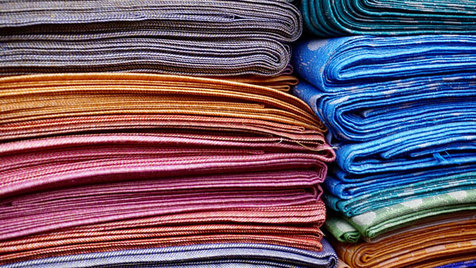
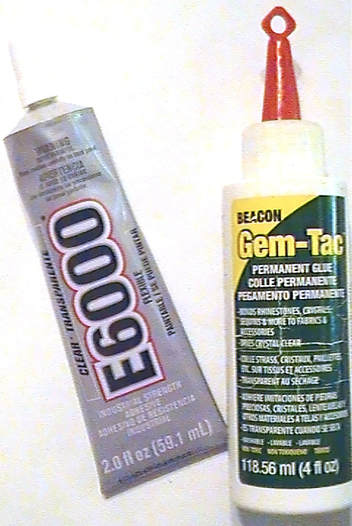
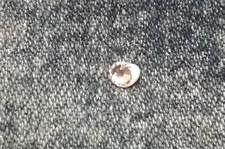
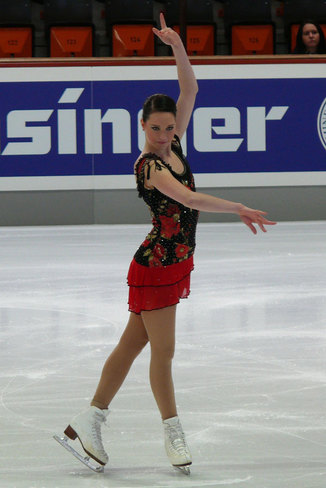
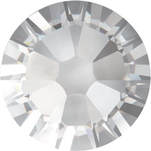
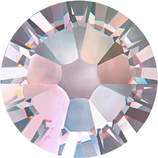
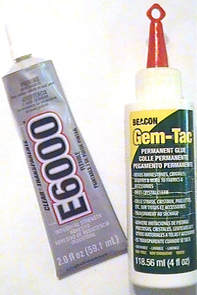
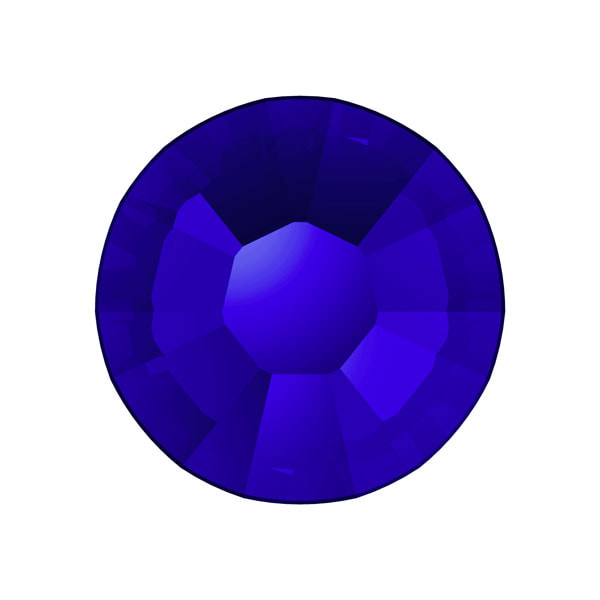
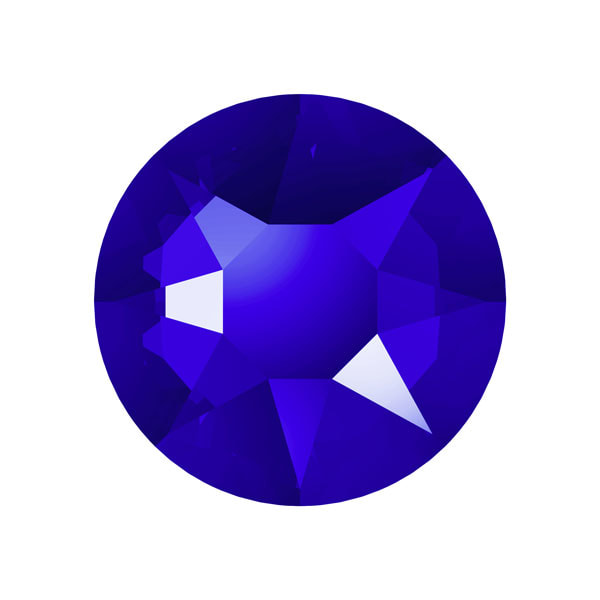
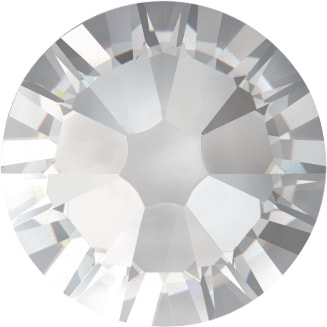
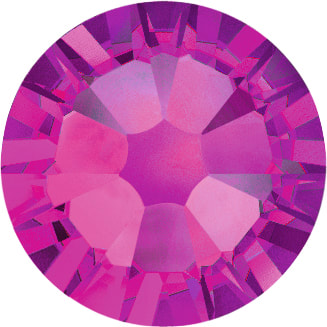
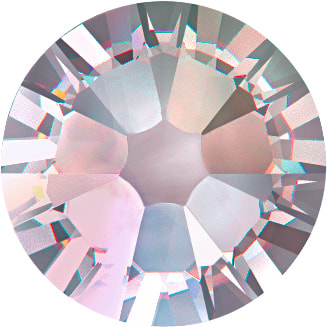
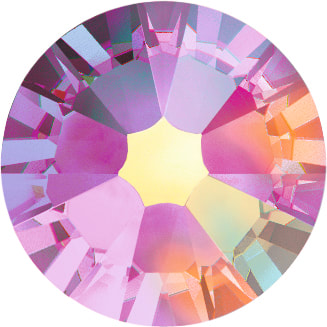
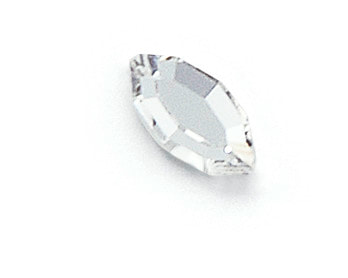

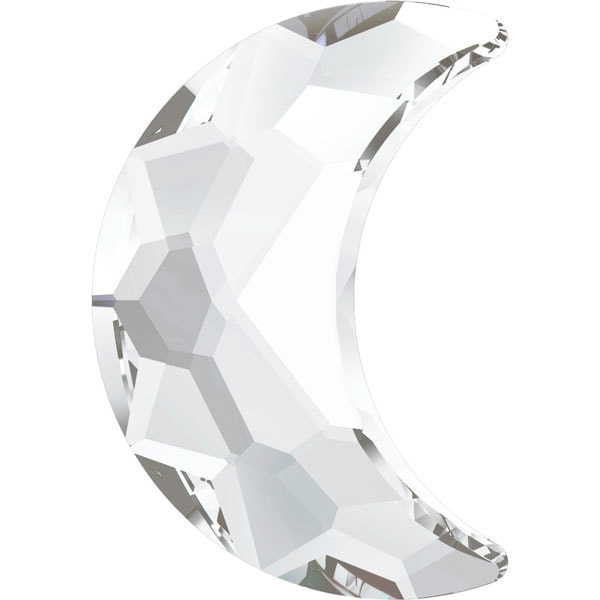
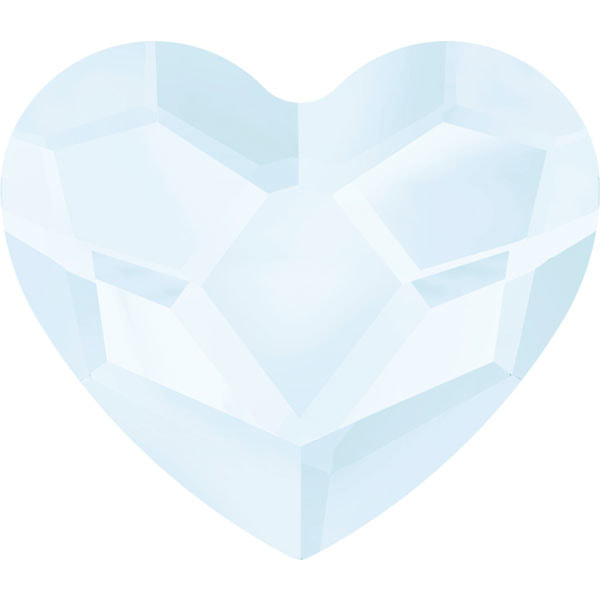
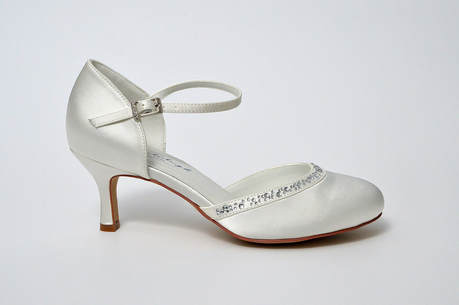
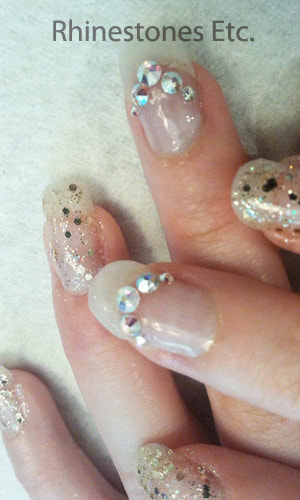
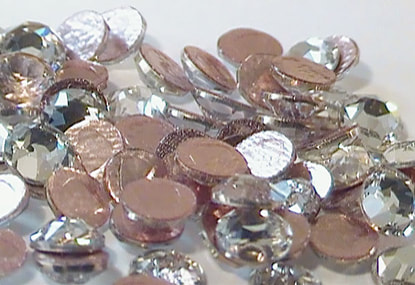
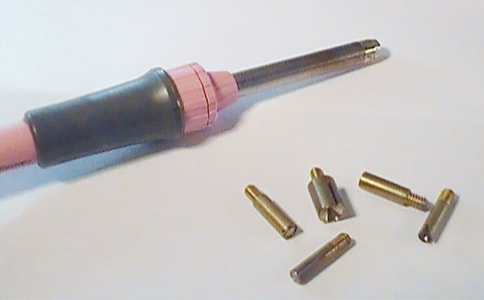
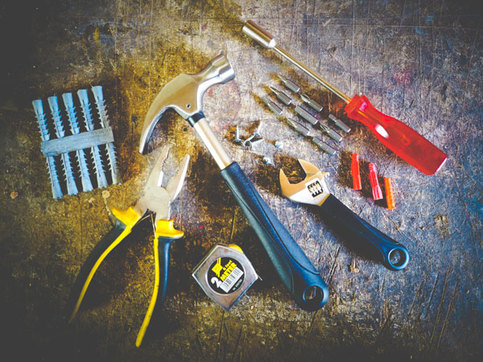
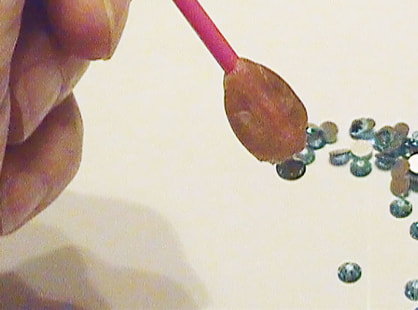
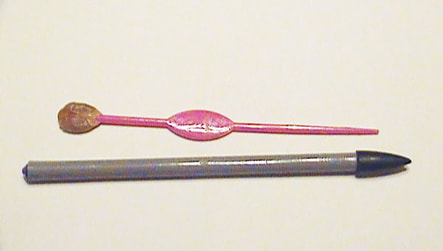
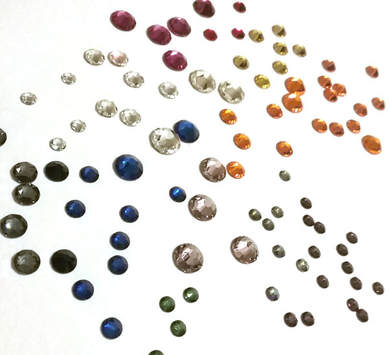

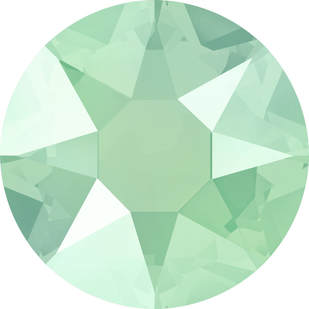
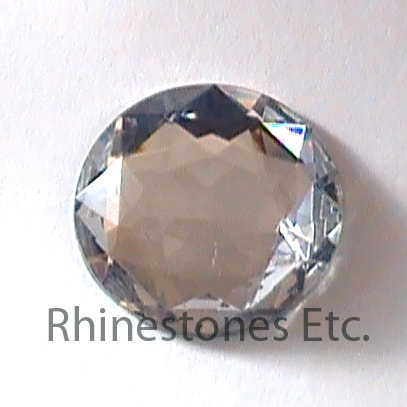
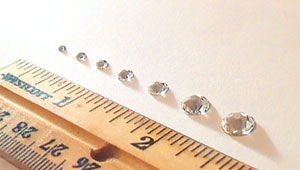
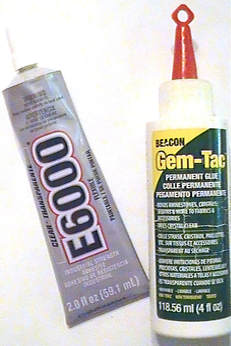
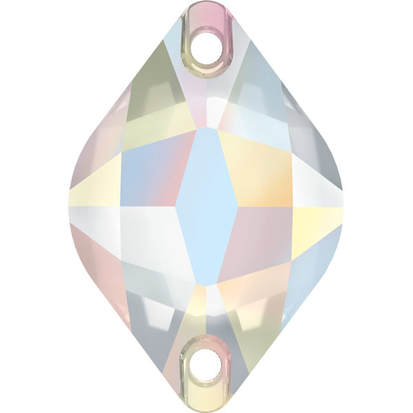
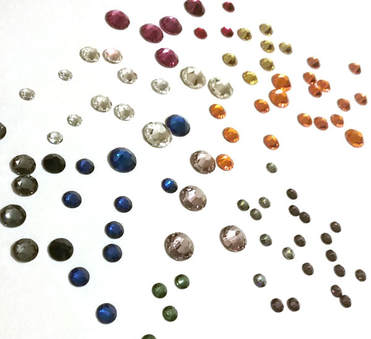
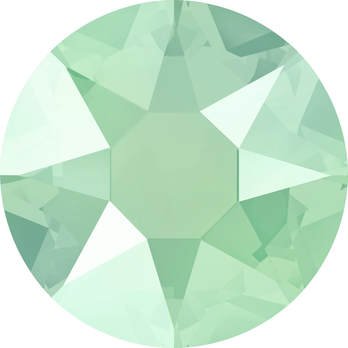
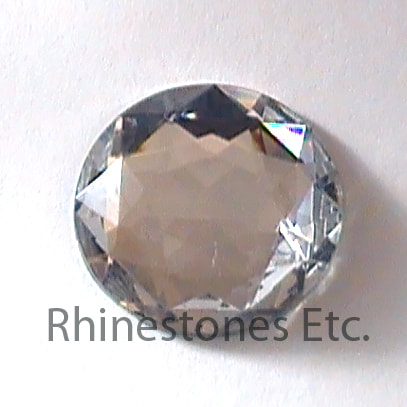
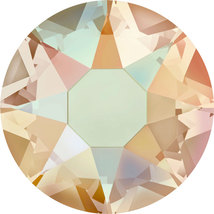
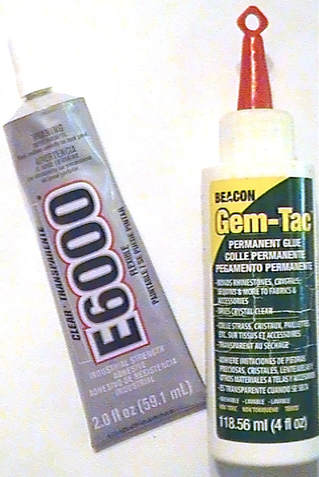
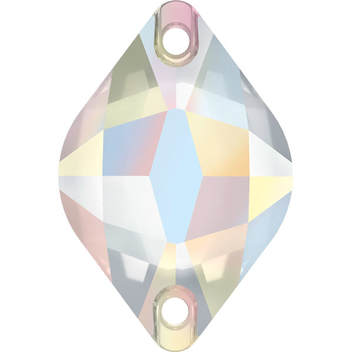
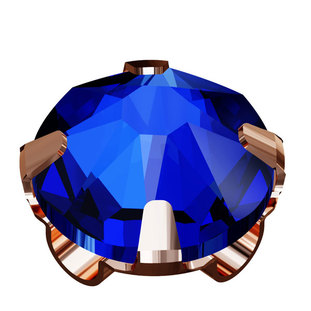
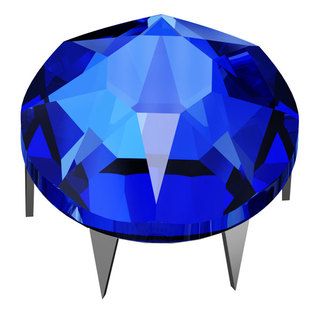
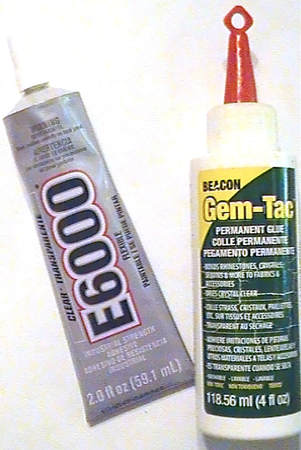
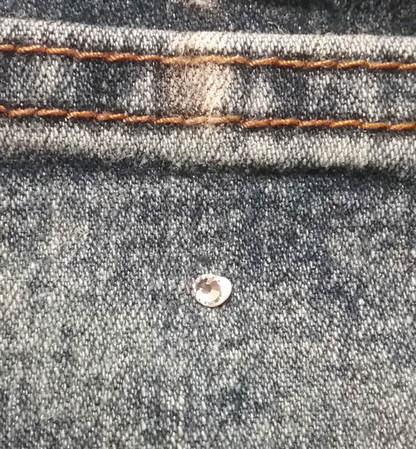
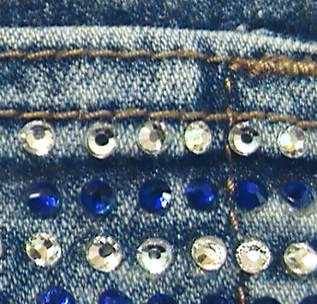
 RSS Feed
RSS Feed